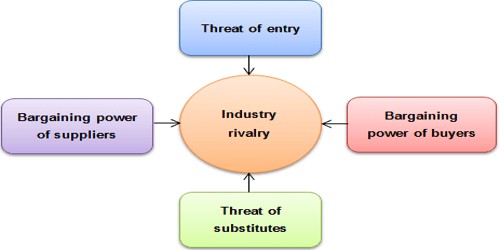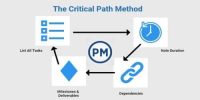Michael Porter’s Five Forces Model of Competitive Analysis
Industry and competitive analysis can be done by using the Porter’s 5 Forces model. The model is named after Michael Porter, this model identifies and analyzes 5 competitive forces that shape every industry, and helps determine an industry’s weaknesses and strengths. Porter’s five forces help to identify where power lies in a business situation.
Five Forces Analysis assumes that there are five important forces that determine competitive power in a business situation. This is useful, because, when you understand the forces in your environment or industry that can affect your productivity, you’ll be able to regulate your strategy consequently. These are:
- Competitive Rivalry:
What is important here is the number and capability of your competitors. If you have many competitors, and they offer equally attractive products and services, then you’ll most likely have little power in the situation, because suppliers and buyers will go elsewhere if they don’t get a good deal from you. On the other hand, if no-one else can do what you do, then you can often have tremendous strength.
- A threat of New Entry:
Power is also affected by the ability of people to enter your market. If it costs little in time or money to enter your market and compete effectively, if there are few economies of scale in place, or if you have little protection for your key technologies, then new competitors can quickly enter your market and weaken your position. If you have strong and durable barriers to entry, then you can preserve a favorable position and take fair advantage of it.
- Supplier Power:
Here you assess how easy it is for suppliers to drive up prices. This is driven by the number of suppliers of each key input, the uniqueness of their product or service, their strength and control over you, the cost of switching from one to another, and so on. The fewer the supplier choices you have, and the more you need suppliers’ help, the more powerful your suppliers are.
- Buyer Power:
Here you ask yourself how easy it is for buyers to drive prices down. Again, this is driven by the number of buyers, the importance of each individual buyer to your business, the cost to them of switching from your products and services to those of someone else, and so on. If you deal with few, powerful buyers, then they are often able to dictate terms to you.
- A threat of Substitution:
This is affected by the ability of your customers to find a different way of doing what you do – for example, if you supply a unique software product that automates an important process, people may substitute by doing the process manually or by outsourcing it. If substitution is easy and substitution is viable, then this weakens your power.













